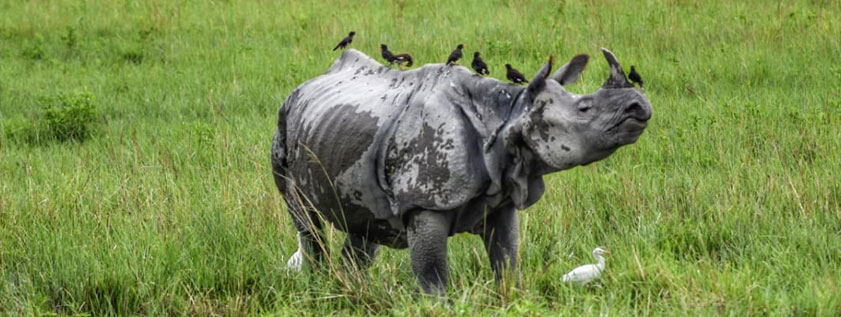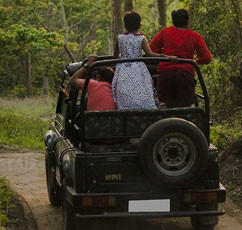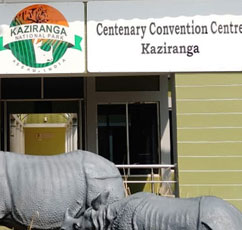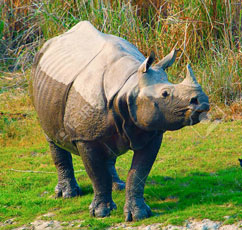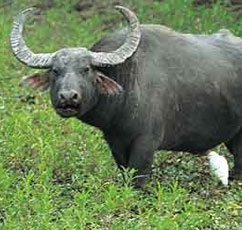Great Indian One Horned Rhino of Kaziranga National Park
A major chunk of the population of greater one horned rhino is found in Indian state of Assam which is a result of greatest conservation success stories in Asia. One Horned Rhino found in Nepal Terai belongs to the Rhinocerotidae family. Rhinos are listed among the vulnerable species lists. They normal weighs between 2260 kilogram to 3000 kilogram is the largest land animal and has a single horn, which measures 20 centimeter to 57 centimeters in length.
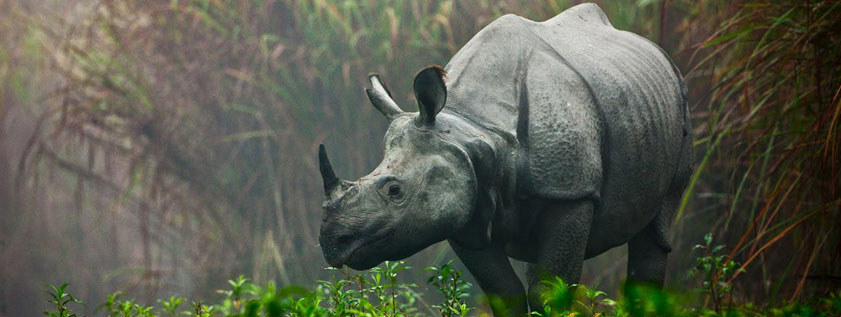
Its conservation story started in the early 90’s but conservation in Kaziranga was affirmed as a proposed reserve forest in the year 1905. Its long journey of Kaziranga saw many ups and downs. Faced many challenges, overcome various issues and finally stood as one of the noted conservations site in India.
Earlier these rhino were found throughout the entire stretch of the Indo-Gangetic Plain but excessive poaching decreased their natural habitat drastically. Presently, more than 3000 rhino live in the wild out of which about 2000 found in Assam’s Kaziranga alone. Rhinoceros can run up to a speed of 55 km/h for a very short period of time and they are also excellent swimmer. They have also a great sense of hearing and smell but comparatively poor eyesight.
Quick Facts for Great-One-Horned-Rhino
| Rhino Location | Found in India and Nepal-Grasslands and shrublands |
|---|---|
| Habitat | semi-aquatic- swamps & Forests |
| Type | Mammals |
| Diet | Herbivores- branches, leaves, shrubs |
| Avg. Life Span | 40 Years |
| Size | Length: 12.5 feet; height at shoulder: up to 6 feet |
| Weight | 2.2 tons |
| Skin | Thick folds, Hairless Skin |
| The Horn | single horn 8 to 24 inches |
| Territories | males usually stay solitary except, females who tuck along with their young one |
| Sexual Maturity | males become sexually mature at 9 years of age, females at the age of 4 begin to breed |
| Gestation | between 15-16 months |
| Birth | at birth, a younger one can weigh up to 58-70kg |
| Vision | Poor- see static objects at a distance of 30 m |
| Great Swimmers | Rhinos love to swim and can dive and feed underwater |
| Can Run | Can Run fast up to 40 km/h |
| Common Name | Indian rhino, greater one-horned rhino; Rhinocéros unicorne de l'Inde (Fr) |
| Scientific Name | Rhinoceros unicornis |
| Status | Endangered – Vulnerable |
| Rhino Population | 3500 in 2016 |
| Diet | Indian rhinos are grazers |
More about One Horned Rhino
If we talk about the size; Indian rhinos are much equal to the size of white rhino in Africa. Completely grown males are larger than females in the wild weighing between 2,200 to 3,000 kg (4,900 to 6,600 lb). Whereas; Indian female rhinos weigh about 1,600 kilogram. The Indian Rhino is from 1.7 to 2 m (5 ft 7 in to 6 ft 7 in) tall and can be up to 4 m (13 ft) long. The record-sized specimen of this rhino was approximately 3,500 kg.
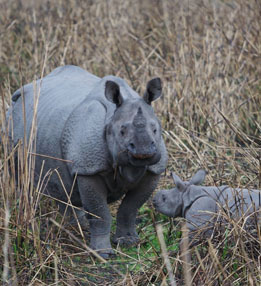
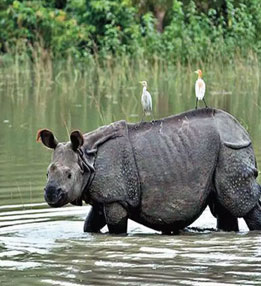
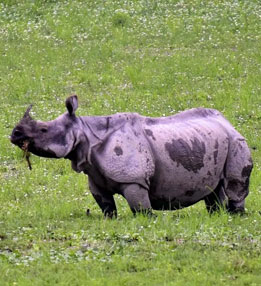
It is important to note that Indian rhino has one horn both males and females but it is not found in newly born child. Horns are like a human fingernails and can be seen after 6 six years of their birth. It stretches up to 25 centimeters to 57 centimeters in length. Its horn color is naturally black. In captive animals, the horn is frequently worn down to a thick knob.
They have thick, silver-brown skin which becomes pinkish near the large skin folds that cover their body. If you see its upper leg part it seems to be covered like water bumps. They have very little body hair. They have longevity around 40 to 47 years.
Behavior of the Rhinoceros
Rhino natural habitat is in tall grass lands and riverine forests but due to habitat loss they are forced to live in more cultivated land. They are generally lone animals, except for moms and calves and reproducing sets, despite the fact that they now and then assemble at washing territories. They have home ranges, the home scopes of guys being normally 2-8 square kilometers in size, and covering one another. Prevailing guys endure guys going through their region with the exception of when they are in mating season, when perilous battles break out. They are dynamic around evening time and early morning. They spend the center of the day floundering in lakes, waterways, lakes, and puddles to chill off. They are amazingly acceptable swimmers.
